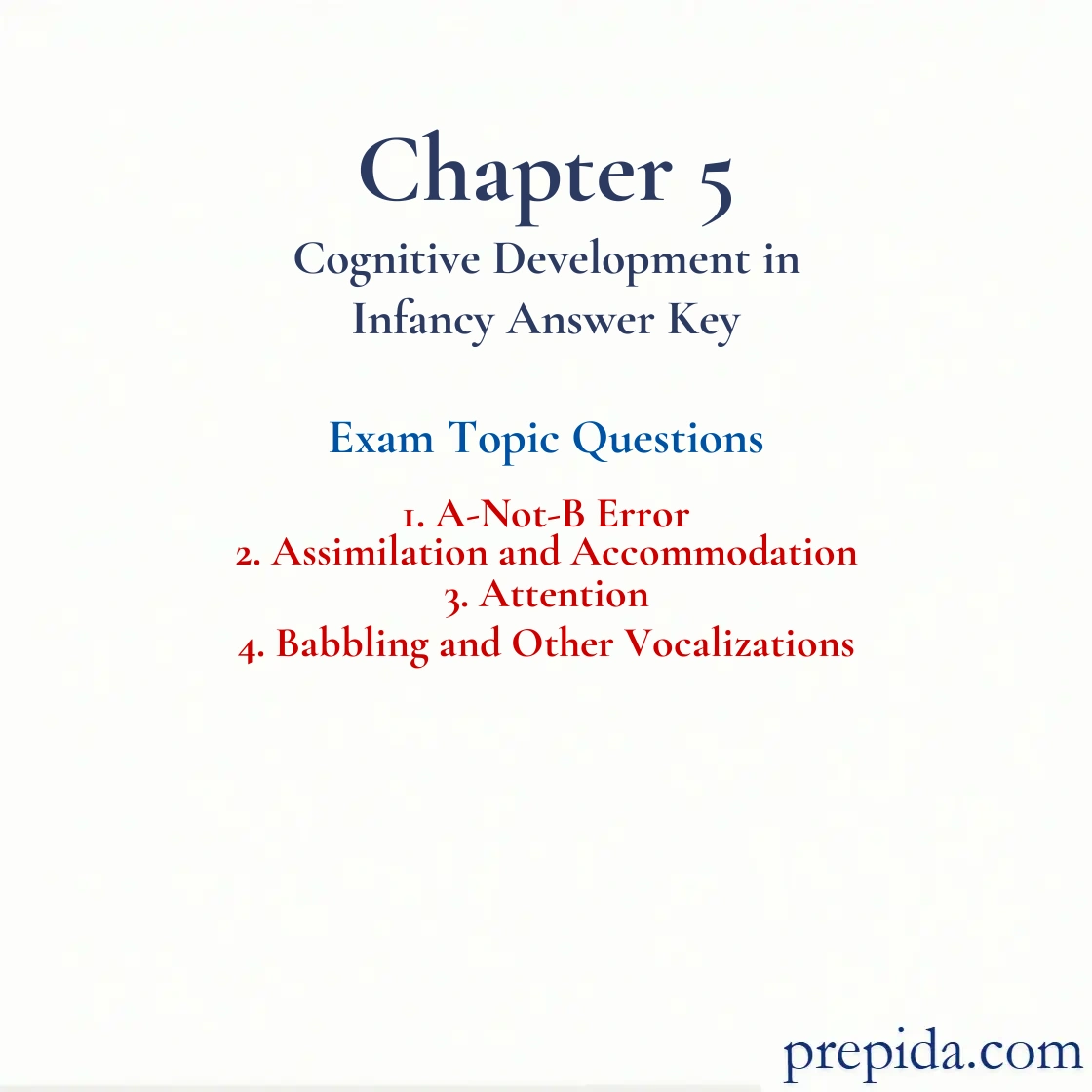
Identify the type of error that occurs when infants make the mistake of selecting a familiar hiding place rather than a new hiding place as they progress into Piaget's fourth substage of the sensorimotor stage.
- Type 1 error
- Type 2 error
- F-not-N error
- A-not-B error
A-not-B Error: Error that occurs when infants make the mistake of selecting the familiar hiding place (A) rather than the new hiding place (B) of an object.
Ruth, an infant, sucked everything that touched her lips and also sucked nearby objects. A few months later, she learned that certain objects such as her mother's breasts or a milk bottle can be sucked but other objects such as spoons, her toys, or her blanket cannot be sucked. In the context of Jean Piaget's theory of infant development, the cognitive processes most likely responsible for Ruth's actions are
- coordination and internalization.
- equilibration and organization.
- assimilation and accommodation.
- habituation and dishabituation.
Cognitive Processes: Changes in an individual’s thought, intelligence, and language.
________ occurs when children adjust their schemes to take new information and experiences into account.
- Adaptation
- Accommodation
- Assimilation
- Application
Accommodation: Piagetian concept of adjusting schemes to fit new information and experiences.
Three-year-old Jesse used to call all moving vehicles "car." He now accurately categorizes moving vehicles into trucks, cars, motorcycles, and buses. Jesse has ________ to fit new information into his existing scheme.
- accommodated
- assimilated
- amalgamated
- applied
Accommodation: Piagetian concept of adjusting schemes to fit new information and experiences.
Two-year-old Anita has learned the word "dog" to identify the family pet Rover. Now, Anita says the word "dog" when she sees any animal. Anita has ________ these animals into her existing scheme.
- amalgamated
- accommodated
- assimilated
- applied
Assimilation: Piagetian concept of using existing schemes to deal with new information or experiences.
In the context of cognitive development, which of the following terms refers to the focusing of mental resources on select information?
- assimilation
- attention
- habituation
- imitation
Attention: The focusing of mental resources on select information.
Attention in the first year of life is dominated by a(n) ________ process, which involves directing attention to potentially important locations in the environment, that is, "where," and recognizing objects and their features, that is, "what."
- orienting/tracking
- sustained/focused attention
- habituation/dishabituation
- orienting/investigative
Attention: The focusing of mental resources on select information.
In the middle of the first year, babies produce strings of consonant-vowel combinations that influence the behavior of their caregivers. This type of vocalization is referred to as
- cooing.
- crying.
- gesturing.
- babbling.
Identify the correct sequence of vocalization in infants.
- crying, babbling, cooing
- crying, cooing, babbling
- babbling, crying, cooing
- cooing, crying, babbling
Sensorimotor Stage: The first of Piaget’s stages, which lasts from birth to about 2 years of age; infants construct an understanding of the world by coordinating sensory experiences with motoric actions.
Baby Luis interacts with his grandma and makes gurgling sounds in the back of his throat to express pleasure. This demonstrates
- talking.
- babbling.
- crying.
- cooing.
Kevin loves to say "da, da, da, da" repeatedly. What type of communication is Kevin using?
- crying
- cooing
- babbling
- gesturing